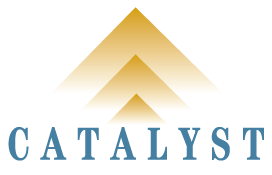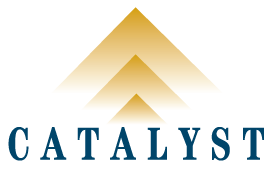-
Three Basic Competencies for Corporate Counsel
- May 29, 2020
- Category: Performance Management
- Publication: Canadian Lawyer In-House website, Opinion section and Legal Business World, Issue 3 (2020)
There are at least three basic competencies which corporate counsel should master by the time they reach their 10th year of practice: efficiency, relationship-building and legal project management. Proficiency in each can be improved with the right protocols and training.
-
The Critical Elements of Non-Hourly Billing
- April 4, 2020
- Category: Managing Total Legal Spend
- Publication: Canadian Lawyer In-House (website) and Legal Business World
Traditional legal panels cannot be strategic for three reasons. First, hourly-based fees mitigate against the client’s objectives. Second, companies rarely commit to a volume of work over time. Third, hourly fees make it difficult to target innovation.
The 8 critical elements for non-hourly pricing are: solid historical data; scoping the demand for legal services; a clear strategy for the preferred way to retain counsel; a well-designed RFP; a well-configured alternate fee arrangement; two rounds of fee discussions with preferred law firms; ad a master agreement with each firm that goes far beyond billing guidelines. -
Budgeting Complex Legal Work
- February 1, 2020
- Category: Managing Total Legal Spend
- Publication: Lexpert, February 2016 at pg 66
Our survey of 50 matter budgets from 20 law firms revealed that 80 % of the firms did not have standards and templates for budgeting complex matters in several specialties. Detailed matter budgets set out the hours for individual timekeepers by phase and task. They also set out the planning assumptions as well as a probability, expressed as a percentage, for each assumption. Law departments should master legal project planning and budgeting.
-
The [8] Critical Elements for Successful Non-Hourly Pricing
- January 26, 2020
- Category: Managing Total Legal Spend
- Publication: Buying Legal Council, Buying Legal Brief, 2nd instalment
The 8 critical elements for non-hourly pricing are: solid historical data about law firm staffing ratios and geographic distributions for each legal specialty; a 3 to 5-year forecast of the demand for legal services; a clear strategy on the best way to source and retain external counsel; a carefully designed RFP covering qualitative and financial elements; pricing, including non-hourly pricing, building on blended rates to achieve optimal staffing; a first round of pricing negotiations designed to customize initial pricing; a second round of negotiations to finalize pricing and operating protocols; and a master agreement with law firms covering service delivery, pricing and innovation.
-
Why a Productivity Improvement Fee Arrangement
- November 6, 2019
- Category: Managing Total Legal Spend
- Publication: Canadian Lawyer In-House websitae, November 2019 and Legal Business World, Issue 9 (2019)
Law departments must be the ones to initiate the replacement of hourly-based fees with alternative fee arrangements (AFAs). Some AFA designs target cost certainty while others lean toward improving efficiency. The article offers two scenarios that are compared with traditional hourly fees. The Productivity Improvement AFA shares risk and reward with law firms while targeting a 10% reduction in total legal spend.
-
Managing the Legal Supply Chain
- October 12, 2019
- Category: Managing Total Legal Spend
- Publication: Legal Business World, Issue 1 (2020) Canadian Lawyer In-House website
There are 5 impediments to modernizing the corporate law department’s relationship with law firms. These are a lack of clear, written strategy by the CLO, setting out preferred relationship with firms; not enough proficiency in influencing the causes and sources of work coming into the law department; deficiencies in the organization, resources and operating practices of law department; poor mastery of alternative fee arrangements, applied to complex work; and no detailed plan to make overcoming these barriers a priority.
-
The Effective Law Department
- August 11, 2019
- Category: Positioning and Strategy
- Publication: Canadian Lawyer In-Hourse, website 7 August 2019 and Legal Business World, Issue 7 (2019)
An effective law department requires six ingredients to be successfully managed. These are a comprehensive business plan, a multi-year forecast of the demand for internal and external legal services, work intake and allocation protocols that business units will accept, technology that is sufficiently advanced to relieve at least 30% of senior counsel time otherwise tied down with routine work, cost-effective non-hourly arrangements with external counsel, and metrics that drive behavior, priorities and resource allocation.
-
Influencing the Demand for Legal Services
- June 13, 2019
- Category: Workflows and Workloads, Performance Management
- Publication: Canadian Lawyer, Richard Stock on-line column, June 2019
Non-strategic work usually gets backed up in law departments – or so it seems. In fact, backlogs typically average 3 days before input is needed from a stakeholder. Work distribution spreadsheets provide clarity about how in-house counsel spend their time. Rigorous work intake criteria, applied judiciously, encourage business units to be better prepared when consulting Legal. Coupled with quarterly planning, the law department can better influence its workflows and workloads.
-
The Five Pillars of Performance for the Law Department
- June 6, 2019
- Category: Performance Management
- Publication: Legal Business World, Issue 5 (2019) and Canadian Lawyer In-House, web site
The article suggests 5 basic elements that can serve as pillars of performance for law departments. These include the extent of “strategic impact” of the department, specifically the extent of contribution to the strategic priorities of the organization. The second pillar is “intellectual capital” with initiatives to leverage the capabilities of lawyers at all levels of experience. The third pillar of “innovation” is a pre-requisite to ensuring that the law department stays ahead of the demand curve for its services. Managing the “Costs” of internal and external counsel is the inevitable fourth pillar. “Leadership” by every lawyer in the department is the last pillar and a pre-requisite to performance in the other four pillars.
-
Thoughts on Pricing Legal Services
- May 13, 2019
- Category: Positioning and Strategy, Workflows and Workloads, Organization and Resources, Performance Management, Managing Total Legal Spend, Benchmarking and Surveys
- Publication: Legal Business World, Issue 5 (2019) Canadian Lawyer In-House, 13 May 2019
The Association of Corporate Counsel (ACC) released a comprehensive report benchmarking 15 legal operations. The law department maturity model uses three stages to survey the External Resources Management function. Only 11 % of the 316 participants reported they were in an advanced stage for this function. Few law departments made significant use of alternative fee arrangements or of metrics applied to pricing. The article discusses the need for pricing expertise, four questions to include in RFPs for legal services and how to approach alternative fee arrangements.
Articles on Demand – Archive

